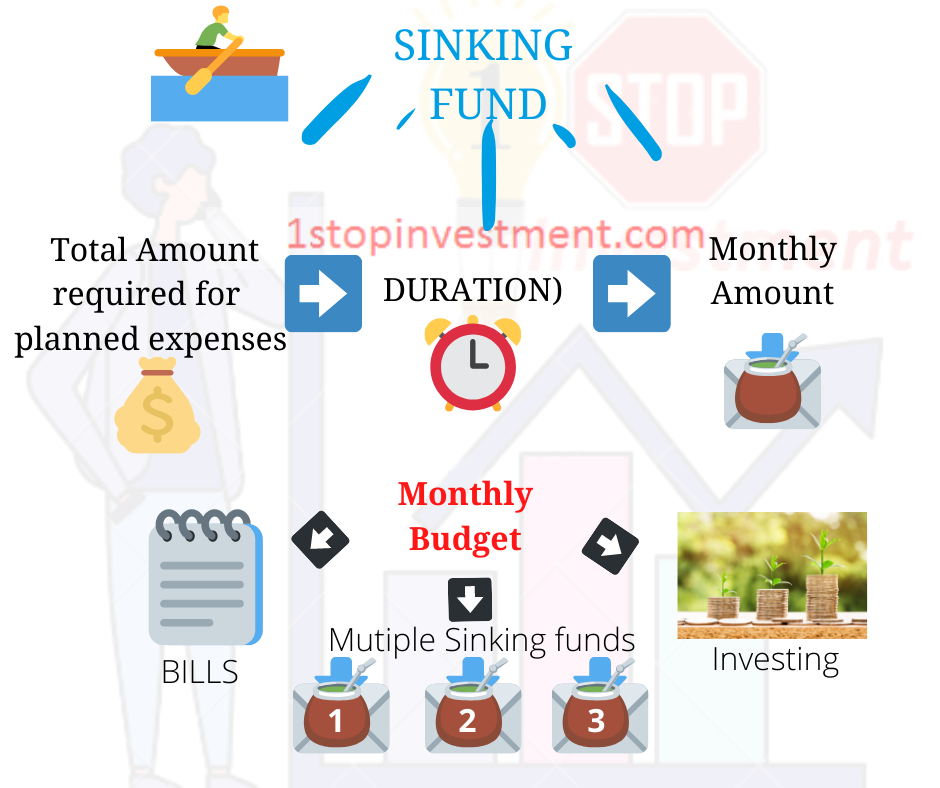Are you hearing this term of sinking funds for the first term.? You’re not alone.
The Sinking fund is a simple and efficient method of saving/budgeting money by setting aside a fixed amount each month and it is completely separate from your usual investments or any SIPs or saving up for emergency funds.
The sinking fund is an entirely different type of Financial Basket to meet your planned expenses and even at times some unplanned events.
Are you looking for any below ?
Why do you need to have this type of fund?
Sinking funds usually come in handy to pay for house repairs or car breakdown or any unforeseen medical emergency and also mainly for some Planned Expenses, it helps.
Oh, wait. To tackle the surprising events only, I have money in an emergency fund. Then why sinking funds separately?
Yes, Emergency funds definitely help but Sinking funds may act as the shield to the emergency funds.
However, an unexpected car repair would be covered by your emergency fund, whereas you would use a sinking fund to replace the tires or some spare parts which you are expected to happen every year.
When it comes to personal finance, the sinking fund keeps you out of debt and stay on track of your financial goals.
Emergency fund vs Sinking funds?
Simply put, here it is “A sinking fund is saving for the known, and the emergency fund is saving for the unknown.”
Your emergency fund should be maintained for something that comes at you out of the blue, something surprising, while a sinking fund is for a planned expense, something foreseen or expected.
When should you use Sinking funds?
There is ‘n’ number of ways to use the sinking funds and many reasons associated with it. Let me tell you a few examples of how you shall set up in your budgets.
For Example, If you have planned expenses (like Gifts, vacation, Festival shopping) or annual recurring expenses (like School fees, Insurance costs, Yearly Subscriptions charges for Internet, Vehicle maintenance & insurance), You can set up sinking funds towards each cause.
Anyway, you are going to spending Money for each reason every year, how are you prepared to pay for that. Sinking funds helps you to forecast and prepared for it.
How to set up the Sinking fund?
I have taken an example of Vehicle insurance which I pay in December month every year. Follow these simple steps,
- Total Amount – I know how much I paid for the Vehicle insurance during the last year. Now Considering the inflation rate, it will arrive at a total cost in the next year.
- Divide – Duration for the expense to happen. 12 months because it is recurring every year.
- Monthly Allocation – Add this Total Amount/duration to your Monthly budget.
Isn’t it sound simple right!
You shall download the sinking fund calculation excel template here.
Multiple Sinking funds shall be created and move your funds accordingly.
Where to park your funds?
You have to park your sinking funds in liquid assets. The type of assets you choose should also depend on the duration.
If you want to set up a sinking fund towards a larger goal say after 5 years, You shall choose Recurring deposits in Post office.
If you want to do for short terms like 1year, Liquid funds, or Gold ETF if you want to gain returns while parking your funds but it has its own risk. Many banks have Flexible Fixed deposits, wherein returns are less but Capital is protected. If you are not interested in any of the above, you shall set up a recurring transfer to your Non-Active banking account. This way your Capital stays liquid.
Conclusion
Sinking funds are simply another Savings which are particularly saved to spend on planned expense and doesn’t get affected by your other wants.
A sinking fund may be omitted in your personal finance acquisition but it doesn’t allow you to sink into debts and helps you to plan your finances much ahead of the road. It allows you to make your purchases without making the budget tight.
Happy reading!






